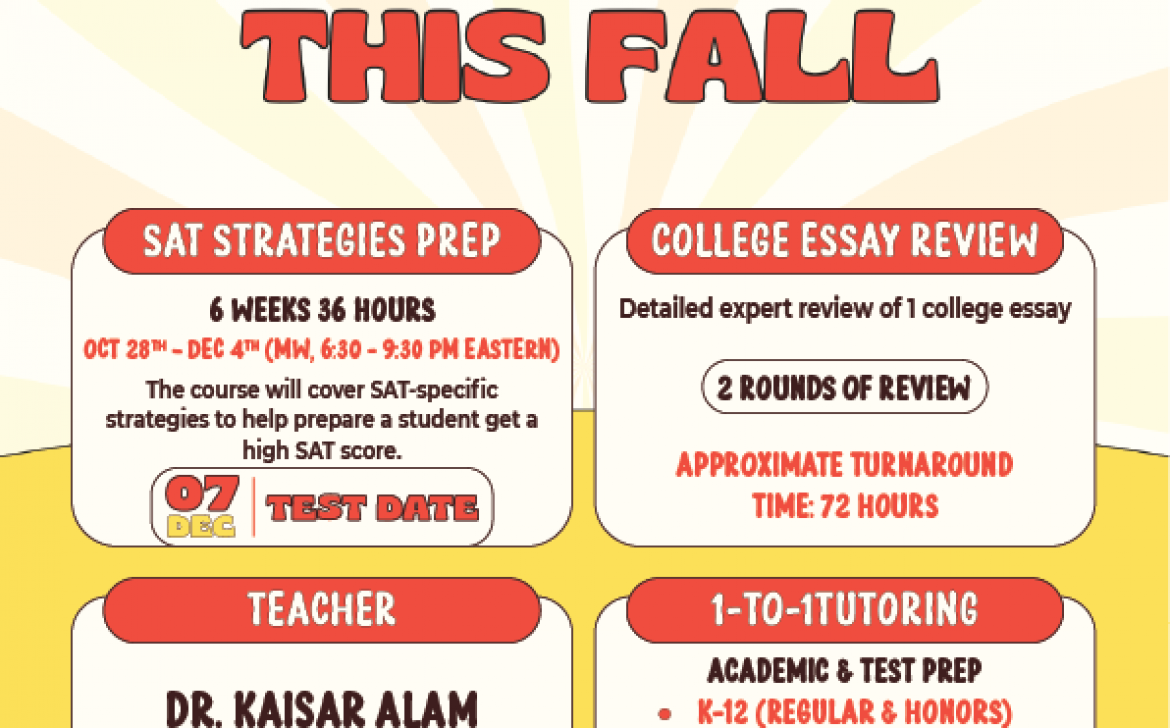What to Do After Submitting Early Applications (EA/ED 2025): Next Steps for Seniors
Included in this article:
- Introduction: The Calm After the Click
- Celebrate Your Hard Work (and Take a Breather)
- Double-Check Submission Materials & Portals
- Keep Your Grades Up — They Still Count
- Map Out a Regular Decision Backup Plan
- Start Planning for Financial Aid and Scholarships
- Managing Stress While Waiting for Results
- Stay Engaged and Curious (Productive Waiting)
- Parent Role: Encouragement Over Pressure
- Prepare for Possible Outcomes (Acceptance, Deferral, or Rejection)
Introduction
There’s nothing quite like the relief of finally hitting “Submit” after weeks of essays, test prep, and endless edits. You’ve poured months of effort into your college applications, and now that it’s submitted, it’s normal to feel both proud and anxious. You must be wondering what comes next after submitting college apps. Is it time to relax, or should you still be doing something?
The truth is, this “in-between” stage can be surprisingly valuable. Over the next few weeks, there’s plenty you can do to stay productive while giving yourself space to recharge. In this article, we will walk you through exactly what to do after submitting early applications, from confirming materials and keeping your grades steady to managing stress and preparing for what comes next.
Celebrate Your Hard Work and Breath
Submitting your Early Action or Early Decision applications is a huge accomplishment, and it absolutely deserves to be celebrated. After months of juggling essays, recommendation requests, test prep, and countless drafts, you’ve crossed one of the most important milestones in your high school journey. It’s okay to pause and breathe. Take a day (or a few) to reward yourself for all that hard work. Watch your favorite movie, spend time with friends, bake something new, or simply catch up on the sleep you’ve been missing. You’ve earned this break, and you don’t need to feel guilty about it.
But this short pause isn’t just about relaxation. Instead, it’s about recovery and reflection. Think of it as pressing “reset” before you begin the next chapter of senior year. Resting allows your brain to process what you’ve achieved, reduce stress hormones, and restore focus. Many students notice that even a short mental break helps them return to schoolwork with renewed energy and better concentration. You might even use this downtime to journal about your experience, note what you’ve learned from the college application process, or list personal goals for the months ahead.
Most importantly, remember that celebrating doesn’t mean stopping your progress, it means honoring it. Taking intentional time to recharge keeps burnout away and helps you sustain motivation for the final stretch of high school. So, don’t forget to celebrate how far you’ve come. You’ve earned every bit of this moment before the next phase begins.
Double-Check Submission Materials & Portals
Submitting your college application is definitely a huge milestone, but “submitted” doesn’t always mean “complete.” Many colleges take a few days or even weeks to process all your materials. Therefore, this stage is about verifying and confirming that every part of your application actually made it through. That’s one of the most important things to remember when deciding what to do after Early Decision or Early Action submissions.
Start by logging into each college’s applicant portal. Most schools, including NYU, Duke, and Boston University, create one within a week of submission. These portals list required documents such as transcripts, recommendation letters, test scores, and application fees. If anything is marked as “missing” or “pending,” you must contact your school counselor or the admissions office right away.
Also remember to check your email (and your spam folder) for acknowledgement messages or portal setup links. Some schools also send follow-up emails requesting updates or additional materials.
For instance, NYU’s applicant portal updates within just a few days after submission, allowing students to see exactly what’s been received and what’s still outstanding. Setting a weekly reminder to review these portals ensures your application stays on track, giving you peace of mind while you wait for decisions.
Keep Your Grades Up
It’s tempting to relax once your applications are in, but your grades still matter, a lot. Colleges don’t stop paying attention after you hit “submit.” In fact, most schools require mid-year transcripts, and admissions officers often review them before making final decisions. This is especially true for students who applied through Early Action and were deferred, or for those who received a conditional Early Decision acceptance. In both cases, consistent academic performance can make all the difference.
To stay on track, set mini weekly goals like finishing assignments ahead of schedule or improving in one subject area each week. Use time-blocking techniques to separate study hours from breaks so you can maintain focus without burning out. Regularly check in with your teachers for feedback or extra help if needed, it shows initiative and helps prevent small struggles from snowballing.
Remember, strong senior-year performance doesn’t just protect your college admission, it builds habits that will serve you well once you actually get there. Keeping up your momentum now makes the transition to college academics far smoother later.
Map Out a Regular Decision Backup Plan
Even if you’ve applied Early Decision or Early Action, it’s wise to stay proactive and prepare for the Regular Decision (RD) round. Doing so doesn’t mean you’re expecting rejection, it simply means you’re being realistic and strategic. College admissions can be unpredictable, and having a backup plan ensures you won’t feel rushed if things don’t go exactly as planned. Plus, working on additional applications while your motivation is still high helps you stay productive rather than anxious while waiting for results. The key is balance: celebrate your early submission, but keep your options open. Planning ahead builds confidence, reduces panic, and gives you full control over your college journey, regardless of the outcome your early applications bring.
Start Planning for Financial Aid and Scholarships
After submitting college apps, you must want to get away from anything related to admissions for a while, but this is actually one of the best times to get ahead on financial aid. Many students assume that the financial process begins after college decisions come out, but in reality, schools often have their own deadlines for forms and scholarships that fall right around this period. Getting organized now means fewer surprises later and gives you a clearer picture of what’s financially possible once offers arrive.
Start by reviewing the FAFSA (Free Application for Federal Student Aid) and, if required, the CSS Profile. These forms determine your eligibility for need-based aid, grants, and work-study programs. Even if you’ve already submitted them, log in to confirm that all sections were processed correctly and that no documents are missing. For schools with their own financial aid portals, make sure you’ve uploaded any tax forms or verification materials they require. It’s also a good idea to check for school-specific scholarships. Many universities, like NYU and Boston University, list merit-based and departmental scholarships that require separate applications or essays.
Another great way to stay on top of this is by keeping a simple spreadsheet. Dedicate columns for each college, listing due dates for financial aid forms, scholarship applications, and supporting materials. Update it weekly, just like you would your SAT prep or homework planner. This helps you stay organized and reduces the risk of missing a crucial deadline amid the excitement of the holiday season.
Even if your ED or EA results aren’t in yet, organizing your financial paperwork early prevents stress later. Imagine how much smoother January feels when your scholarship essays are drafted, and your forms are neatly stored and double-checked. You’ll be able to focus on celebrating your results, instead of panicking for missing documents.
Manage Stress While Waiting for Results
The weeks following application submission can be surprisingly challenging. After months hard work, students often find themselves stuck in a waiting period that feels out of their control. This mix of uncertainty and anticipation can lead to restlessness, overthinking, and even anxiety.
Now, it’s important to focus on stability and self-care in order to stay calm during this phase. Establish a daily routine that includes study, rest, and downtime. Limiting social media use, especially college-related forums and group chats, helps avoid comparison and unnecessary pressure. Many students find peace by setting “college-free zones” in their day, like avoiding Reddit forums about results or muting college threads on Instagram. Techniques like journaling, mindfulness, or short exercise breaks can also prevent stress from building up. Instead of refreshing your email every hour, shift your energy toward school, hobbies, or family time. This waiting period isn’t just about patience; it’s about maintaining balance until results arrive.
Stay Engaged and Curious (Productive Waiting)
Once your early applications are submitted, it’s easy to feel like you’re in limbo, neither preparing nor celebrating, just waiting. But this period doesn’t have to feel like wasted time. In fact, it’s one of the best opportunities to explore interests, build new skills, and strengthen parts of your profile that could still make a difference, especially if you’re preparing for Regular Decision or scholarship applications. Instead of wasting time counting down the days until early action results, use this time to grow in ways that make you more confident, capable, and well-rounded.
Start by exploring scholarship and internship opportunities that align with your future goals. Many scholarships have winter deadlines, and spending a few hours each week searching or applying can put you ahead of the competition. Similarly, local or online internships, even short-term ones, show initiative and maturity, qualities that colleges deeply value. If you’re unsure where to begin, websites like College Board’s BigFuture or Fastweb are excellent places to find scholarships suited to your interests and background.
You can also use this time to learn more about the colleges you applied to. Take virtual campus tours, join student panels, or read department blogs to better understand what life there might be like. If you’re deferred or waitlisted later, this knowledge will come in handy when writing update letters or expressing continued interest. Plus, it helps you picture yourself in these environments, a powerful motivator during the waiting phase.
Another productive way to stay engaged is by trying something new that adds meaning to your daily routine. Maybe you’ve always wanted to join a club, start a small project, or volunteer at a community center but never had time during SAT season. Now’s your chance. Small commitments like these not only enrich your routine but also remind you that growth doesn’t stop after pressing “submit.”
Finally, remember that this time is not “idle.” It’s a bridge between effort and opportunity, a phase that teaches patience, balance, and self-discovery. Staying active, curious, and open to learning keeps your mind focused and your confidence high, ensuring that by the time decisions arrive, you’re not just waiting, you’re evolving.
Parent Support Tips for a Calm and Confident Waiting Period
For parents, the period after submitting college applications can be just as overwhelming as it is for students. But during this time, the kind of support parents offer can make a huge difference in how students cope emotionally. The goal isn’t to take control or constantly check for updates; it’s to help your teen feel grounded, supported, and confident in what they’ve already accomplished.
Try open and calm conversations. Instead of focusing on college updates, shift the conversation toward how your child is feeling. A simple, “How are you managing school this week?” is much more reassuring than, “Any news from colleges yet?” This small change reduces pressure and reminds your teen that they are valued for who they are, not just the outcome of an admission decision. Creating a safe emotional space at home helps students open up about their worries without fear of disappointing anyone.
Parents can also play a key role in helping students stay organized and balanced. Offer to help them track Regular Decision deadlines, organize scholarship materials, or review financial aid forms. These are concrete, non-intrusive ways to stay involved while giving students a sense of independence. Equally important is making sure they’re getting rest and keeping perspective. Encourage breaks from screen time, family dinners, or small weekend outings to shift the focus away from constant waiting.
Finally, the best thing parents can do is model patience and optimism. Teens often take emotional cues from their parents. When you stay calm and positive, even if results take longer than expected, it reassures them that everything will work out in time. Remember, your encouragement is far more powerful than constant reminders or questions. Such parents naturally create a calmer, more supportive home environment.
This waiting period can be a special phase for families, one where students learn resilience, and parents practice trust. With the right mix of empathy, structure, and encouragement, parents can help their children navigate these final months with confidence and peace.
Prepare for Possible Outcomes (Acceptance, Deferral, or Rejection)
As early decision and early action results arrive, it’s natural to feel excited, anxious, or uncertain. Each outcome, whether it’s an acceptance, deferral, or rejection, is part of your journey, not the end of it.
If you’re accepted, celebrate your success! For Early Decision students, this means confirming your spot, reviewing financial aid details, and withdrawing other applications.
If you’re deferred, don’t lose hope. Admissions officers simply want more information, like updated grades or achievements. Send a brief letter of continued interest, stay focused in class, and keep improving your profile.
If you’re rejected, remember it doesn’t define your potential. Many students find their best fit at schools they didn’t expect. Take time to regroup and redirect your focus toward Regular Decision applications. Ultimately, an admission decision defines a moment, not your potential, what matters most is how you move forward with resilience and optimism.
Final Thoughts
After submitting college applications, it’s natural to feel like everything is out of your hands, but this in-between period can be one of the most rewarding parts of the journey. You’ve already shown focus and determination; now it’s time to channel that same energy into growth, curiosity, and balance. If you want expert help shaping your next steps, from time management to SAT prep, reach out to Prep Excellence and make this waiting period count.


